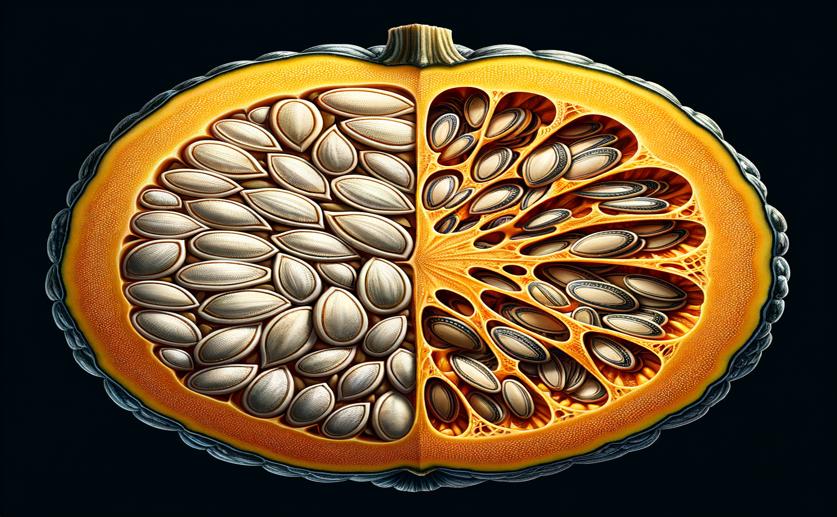
How Cadmium and Copper Affect Pumpkin Seed Growth and Health
Jim Crocker
15th April, 2024

Image Source: Natural Science News, 2024
Key Findings
- Study in El Oued found zucchini seeds can germinate despite Cd and Cu exposure, but their growth vigor is reduced
- Heavy metals affected the embryonic axes, decreasing length and dry weight, which are crucial for plant development
- Zucchini's defense mechanisms varied, with some antioxidants decreasing and others increasing in response to metal stress
BiochemPlant ScienceAgriculture
References
Main Study
1) Embryo growth alteration and oxidative stress responses in germinating Cucurbita pepo seeds exposed to cadmium and copper toxicity.
Published 14th April, 2024
https://doi.org/10.1038/s41598-024-58635-1
Related Studies
2) Influence of atmospheric pollutants on agriculture in developing countries: a case study with three new wheat varieties in Pakistan.
Journal: The Science of the total environment, Issue: Vol 371, Issue 1-3, Dec 2006
3) Biological effects of heavy metals: an overview.
Journal: Journal of environmental biology, Issue: Vol 26, Issue 2 Suppl, Jun 2005
4) [Biochemical changes associated with cadmium and copper stress in germinating pea seeds (Pisum sativum L.)].
Journal: Comptes rendus biologies, Issue: Vol 328, Issue 1, Jan 2005



 4th April, 2024 | Jim Crocker
4th April, 2024 | Jim Crocker